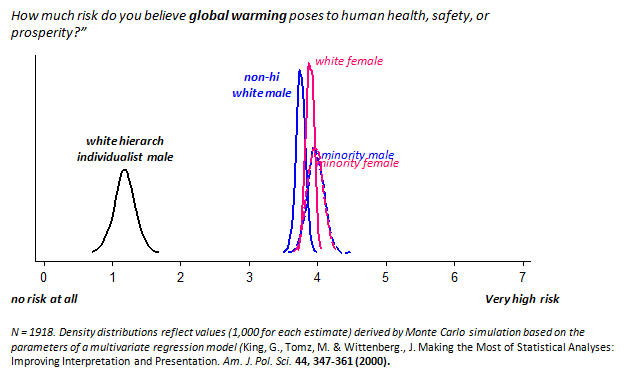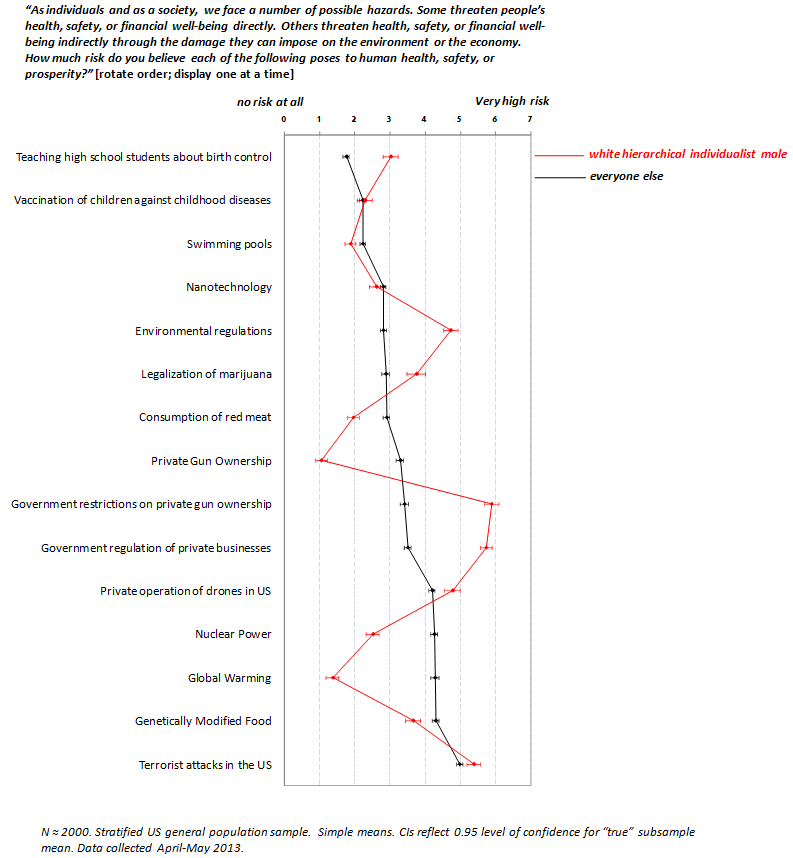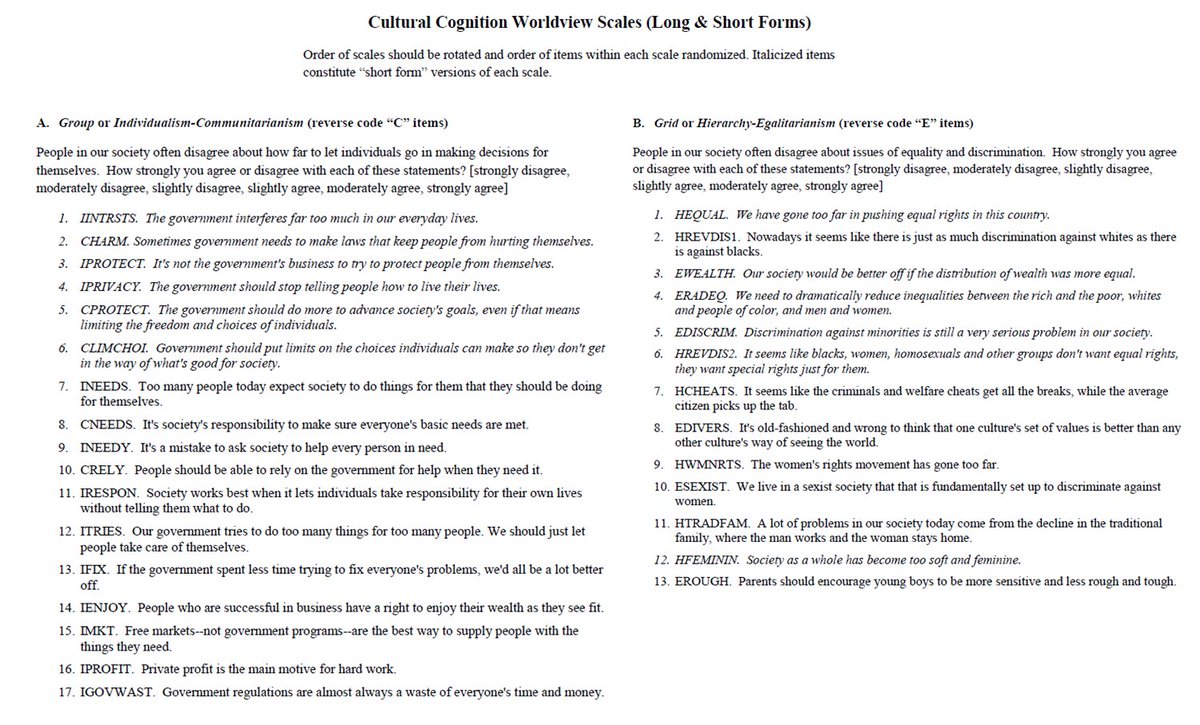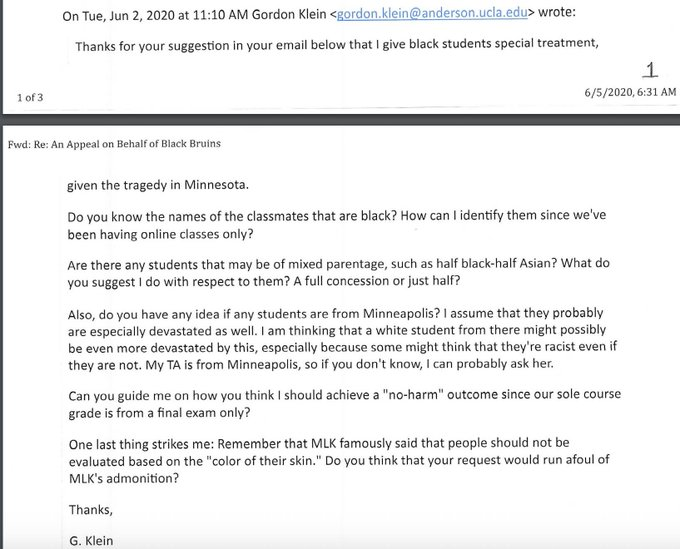Yale researcher Dan Kahan studied the personality and cultural differences of Americans and found a fascinating distinct cluster: white hierarchical individualistic men
Making up around 1/6th of the population, this cluster has markedly different views about risk, guns, environment, and more.
For example, here's white hierarchical men on climate change vs everyone else:
Hierarchical individualist men don't just not overlap with everyone else on the risks of climate change, they're on a different planet.
But hierarchical individualists aren't universally fearless people. They just have different risk assessments.
For example, white hierarchical individualists find the idea of gun regulations to be incredibly high risk, but almost no one else does. Here's the full chart of risk perceptions:
Kahan's fascinating research further solidifies that differences in views of reality are fundamentally motivated by personality and values differences.
Curious whether you're a hierarchical individualist or an egalitarian communist? Here's the test:


Making up around 1/6th of the population, this cluster has markedly different views about risk, guns, environment, and more.
For example, here's white hierarchical men on climate change vs everyone else:
Hierarchical individualist men don't just not overlap with everyone else on the risks of climate change, they're on a different planet.
But hierarchical individualists aren't universally fearless people. They just have different risk assessments.
For example, white hierarchical individualists find the idea of gun regulations to be incredibly high risk, but almost no one else does. Here's the full chart of risk perceptions:
Kahan's fascinating research further solidifies that differences in views of reality are fundamentally motivated by personality and values differences.
Curious whether you're a hierarchical individualist or an egalitarian communist? Here's the test:



The Cultural Cognition Project appears to have stopped in 2018 without a note as to why, but this Squarespace site has all the old blog posts
(Note: you may need to rewrite the links, as they no longer own their domain name)
culturalcognition.squarespace.com/blog/
(Note: you may need to rewrite the links, as they no longer own their domain name)
culturalcognition.squarespace.com/blog/
• • •
Missing some Tweet in this thread? You can try to
force a refresh




















